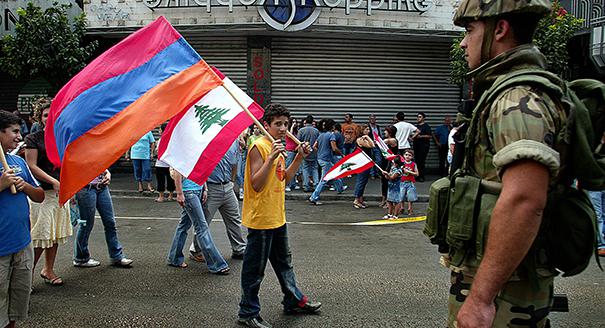On May 15, Lebanon is scheduled to hold parliamentary elections. Where do Lebanese Armenians stand on the vote? Do they feel engaged enough to participate, and do they have any hope, or desire, of seeing a change in the parties that have traditionally dominated their community?
The total number of Armenian voters is officially estimated at 106,476, divided principally between 86,163 Armenian Orthodox voters and 20,313 Armenian Catholics. In the last elections of 2018, only 28 percent of registered voters participated. In districts where there are many Armenians, such as Beirut, only 10,800 out of 44,703 voted. In the Metn District of Mount Lebanon, 10,400 out of 31,839 voters participated. While in Zahleh, only 3,000 voted out of 10,000 registered voters.
Generally speaking, Armenian voters can be divided into three categories. The first is made up of those who are strongly affiliated with the main Armenian parties. They tend to be afraid of change, and even when they seek to take a distance from the parties, they are afraid of where this might lead. Such behavior may mean they are denied assistance and health services provided by Armenian social organizations. These voters subscribe to the belief that if party candidates are not elected, this will impact Armenian identity and language negatively, weakening the community. Most of these voters live in Armenian neighborhoods administered by the main political parties.
One voter in the predominantly Armenian quarter of Burj Hammoud, a taxi driver, expressed such an outlook in his comments: “My vote will be for whomever my party decides. The party has been next to the Armenian people for so long. Where would the Armenian community stand without a strong party? We believe that what the party wants is best for Lebanese Armenians.”
A second category of Armenian voters is made up of those who were previously supportive of the mainstream parties, but later saw their deep-seated corruption and toxic manipulation of identity politics to remain in power. Many of these voters participated in the October 17, 2019, uprising, hoping to change Lebanon’s model of governance. When this was unsuccessful, they were not welcomed back by the parties. Instead, they decided to join civil society groups.
What motivated such voters are generational questions and a desire for change. As one voter, Hratch Surmenian, a maintenance manager, described it: “My vote will not go to the traditional Armenian parties, who no longer represent the ambitions of the youth. We are disgusted with seeing the same faces. We need change, new ideas, and new candidates who can become the leaders of tomorrow.”
However, electoral slates formed by civil society organizations will suffer from having no deep connections with the Armenian community. Nor, unfortunately, will they be able to replace the major parties, which were often established a century ago and have had a major impact on Armenians because of their deep involvement in the community’s struggles after the genocide of 1915–1917.
A third group of voters is made up of those who live outside Armenian quarters and who are strongly attached to their community, but don’t belong to any political parties and don’t believe in civil society candidates. These voters have a strong sense of being Lebanese and are fully aware of the potential threats to the Armenian community in the event the wrong candidates are elected. Their inability to engage with civil society groups derives from their awareness that they cannot help Armenians in Lebanon in the same way the parties can, and that such groups don’t want to work with the parties anyway.
Marlen Salbashian, a healthcare specialist, expressed this attitude best. She has two daughters who are studying outside Lebanon, and when asked whether she would participate in the upcoming elections, her answer was: “Why would I waste my time by voting when I know the same candidates will get elected. If I had to vote I would only vote against the civil society candidates, who know nothing about the Armenian struggle and who can’t even give a speech in Armenian.”
The Beirut Port blast of August 4, 2020, has had a major potential impact on the direction of the Armenian vote. The explosion destroyed many areas in which Armenians live, including Mar Mikhail, New Hajen, Burj Hammoud, and Ashrafieh. This shook the community, destroying or damaging an estimated 1,500 Armenian businesses and shops, and more than 3,000 homes. Many people from the middle class, who were already suffering from Lebanon’s economic collapse in 2019, chose to emigrate rather than rebuild. For the ones who stayed, the Armenian parties provided welfare and organized fundraisers. This served to reinforce the mainstream parties. But something else also happened that went in the same direction: The voting rolls changed as people left the country, but have not been updated by the state. This is likely to favor the mainstream parties, who can gain by illicitly securing the vote of absent voters.
The numbers from the 2018 elections, and the fact that more Armenians are leaving Lebanon, suggest the community is slowly disappearing. Unofficially, estimates are that the number of Lebanese Armenians today is not more than 55,000, compared to 156,000 in 2018. Such dynamics indicate that there is a high probability that traditional parties will continue to dominate the community, even as the number of Armenian voters, which had been a strong point for the mainstream parties, continues to go down. This raises questions as to whether the parties can remain as influential in the overall voting process as they were.






